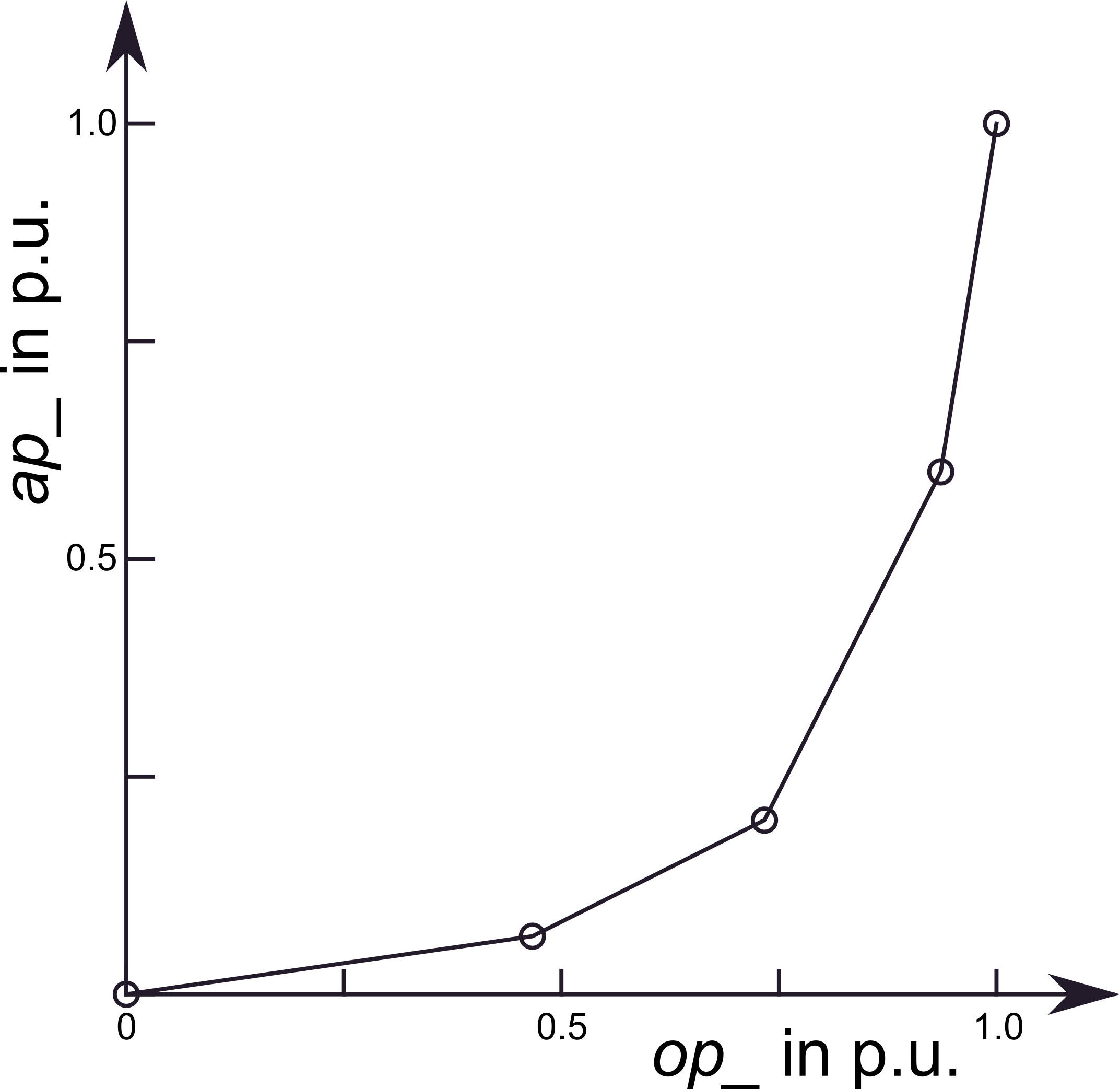GenericPressureLoss
Created Monday 08 July 2013
A partial pressure loss model as common basis for all valve replaceable models
1. Purpose of Model
In this base class values common to all replaceable valve fundamentals are calculated
2. Level of Detail and Physical Effects Considered
2.1 Level of Detail
Referring to Brunnemann et al. [1], this model refers to the level of detail L1 because no spatially discretisation is featured.
2.2 Physical Effects Considered
- the valve characteristics defining the correlation between valve
3. Limits of Validity
4. Interfaces
an internal communication record iCom is accessed as an outer record.
5. Nomenclature
a table referencing the nomenclature in the source code, the descriptions of variables and the "human-readable"

6. Governing Equations
The pressure drop in design flow is given by the difference of the pressures at the ports,

The flow resistance of the valve is strongly characterised by the local 3D flow field in the valve. To cope with these complex phenomena the usage of characteristic lines has been established. This characteristic line defines a correlation between the opening of the valve, i.e. the valve's position and the volume flow through the valve, see figure below. Please note that both, the opening and the effective aperture are expected to be given in p.u. Some supplier may provide this information in means of volume flow as function of opening percentage or other similar values. For further reading you may want to look at [2] and [3] for examples of valve characteristic curves.

This characteristic line is then evaluated in a a piece wise linear manner, i.e.

7. Remarks for Usage
8. Validation
9. References
[1] Johannes Brunnemann and Friedrich Gottelt, Kai Wellner, Ala Renz, André Thüring, Volker Röder, Christoph Hasenbein, Christian Schulze, Gerhard Schmitz, Jörg Eiden: "Status of ClaRaCCS: Modelling and Simulation of Coal-Fired Power Plants with CO2 capture", 9th Modelica Conference, Munich, Germany, 2012.
[2] Philip J Thomas: "Simulation of Industrial Processes for Control Engineers", ISBN: 978-0-7506-4161-6, Elesevier, 1999.
[3] Walter Wagner: "Regelarmaturen", ISBN 3-8023-15664-2, Vogel Buchverlag, Germany, 1996.
10. Authorship and Copyright Statement for original (initial) Contribution
Author:
DYNCAP/DYNSTART development team, Copyright 2011 - 2022.
Remarks:
This component was developed during DYNCAP/DYNSTART projects.
Acknowledgements:
ClaRa originated from the collaborative research projects DYNCAP and DYNSTART. Both research projects were supported by the German Federal Ministry for Economic Affairs and Energy (FKZ 03ET2009 and FKZ 03ET7060).
CLA:
The author(s) have agreed to ClaRa CLA, version 1.0. See https://claralib.com/pdf/CLA.pdf
By agreeing to ClaRa CLA, version 1.0 the author has granted the ClaRa development team a permanent right to use and modify his initial contribution as well as to publish it or its modified versions under the 3-clause BSD License.
11. Version History
- 2013-07-04 - v0.1 - initial implementation - Friedrich Gottelt, XRG Simulation
